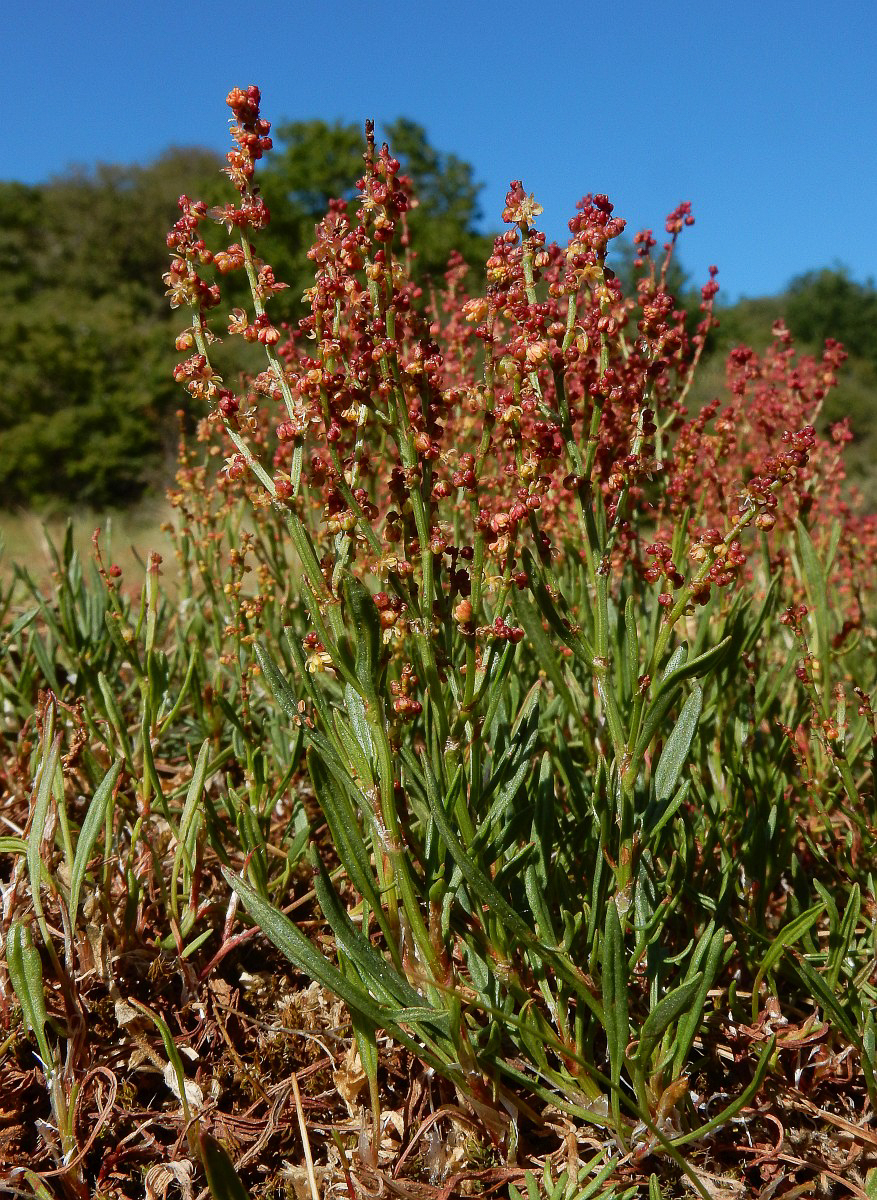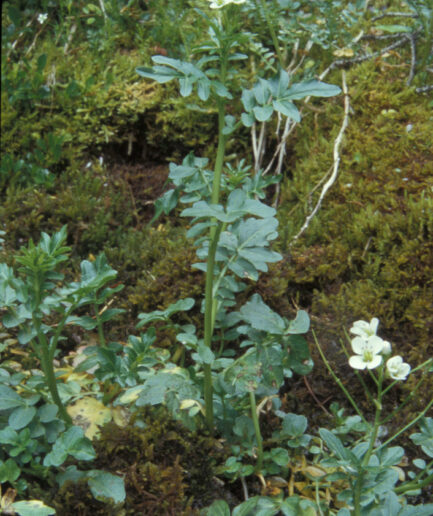Red sorrel
Scientific Name: Rumex acetosella L.
Family: Polygonaceae
MORPHOLOGY
Habit and Size: Annual herbaceous plant, 10-40 cm tall, with a well-developed rhizome, sometimes stoloniferous.
Stems: Erect stem, curved above the nodes, striated and reddish at the base.
Leaves: Lower leaves with a blade 5-10 x 25-40 mm, with 2 spreading and sometimes reflexed auricles at the base; petiole usually longer than the blade and widened at the top. Alternate cauline leaves with linear blade and petiole up to 4 (12) cm long.
Flowers: Rich inflorescence on erect branches with flowers arranged in verticils around the axis of the inflorescence. Trimerous sepaloid perianth with 3+3 reddish-green tepals. Flowers, tiny, reddish, pendulous, 1 mm in size, dioecious. Blooms from April to August.
Fruits and Seeds: The fruit is a dikele with valves as long as or slightly longer than the achene, not fused to the achene. Free achene, trigonous, oval, 1.3-1.5 mm long.
DISTRIBUTION AND HABITAT
Present throughout Italy in uncultivated land, meadows, open woodland clearings, dry and sandy soils, field margins, from 0 to 2,200 m.
USE
The young and fresh leaves have a sour taste and can be used both raw and cooked and in the preparation of sauces, but prolonged consumption is not recommended as it may promote kidney stones since, like other congeners, it contains oxalic acid.
INTERESTING FACTS
The acidic juice can be used to remove rust.
Photo Credits: under a free license from Saxifraga, Ed Stikvoort, Rutger Barendse.



















